|
|
Post by groundhog on Dec 6, 2012 1:54:53 GMT
James Emerson
La Vacquerie, France
6th December 1917  James Emerson was born in Collon Co. Louth on 3rd August 1895. During World War 1 he served in 9th Bn, Royal Inniskilling Fusiliers. He won a Victoria Cross on 6th December 1917 in action on the Hindenburg Line near Cambrai. His citation reads; For repeated acts of most conspicuous bravery. He led his company in an attack and cleared 400 yards of trench. Though wounded, when the enemy attacked in superior numbers, he sprang out of the trench with eight men and met the attack in the open, killing many and taking six prisoners. For three hours after this, all other Officers having become casualties, he remained with his company, refusing to go to the dressing station, and repeatedly repelled bombing attacks. Later, when the enemy again attacked in superior numbers, he led his men to repel the attack and was mortally wounded. His heroism, when worn out and exhausted from loss of blood, inspired his men to hold out, though almost surrounded, till reinforcements arrived and dislodged the enemy.He has no known grave and is commemorated on the Cambrai Memorial. |
|
|
|
Post by groundhog on Dec 11, 2012 9:25:09 GMT
James Adams
Killa Kazi, Afghanistan
11th December 1879 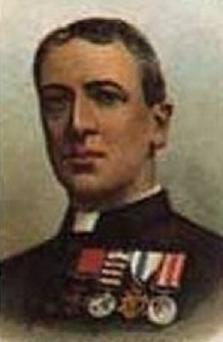 James Adams was born in Cork on 24th November 1839. In 1879 he was a Chaplain in the Bengal Ecclesiastical Establishment and attached to the Kabul Field Force during the Second Afghan War. At Killa Kazi on 11th December 1879 he rescued several members of the 9th Lancers who had fallen into a flooded ditch and were trapped beneath their horses. He did this under fire from and within a few yards of the enemy, having abandoned his own horse to do so. For his courage he was awarded a Victoria Cross on 1st December 1881. Technically, Reverend Adams was a Civilian so he bacame one of only five civilian holders of the VC. Queen Victoria signed a warrant to allow Chaplains receive the award in August 1881 so he's also the first Chaplain VC. James Adams continued his career in the church in England. He wa made Honorary Chaplain to King Edward VII and he died in Ashwell, Rutland on 24th October 1903. He is buried in the Churchyard there. www.stamfordmercury.co.uk/news/local/war-hero-s-memorial-is-restored-1-486494Photo Credit; www.findagrave.com |
|
|
|
Post by groundhog on Dec 15, 2012 22:09:06 GMT
The Battle of Colenso
15th December 1899 The Battle of Colenso was an early engagement in the Second Boer War and was part of a trio of defeats for the British Army in what became known as “Black Week”. The battle was fought as part of the relief of Ladysmith in Natal with the Boers attempting to halt the British advance at the Tugela River. After a two day bombardment of the Boer positions, the British simply marched to the Tugela river in order to cross at a “drift”. Their guides however led them to the wrong place and a whole infantry brigade became trapped in a loop of the river, whereupon the Boer infantry opened fire on sitting targets. Artillery was brought forward in support and many gunners quickly became casualties forcing the survivors to abandon their guns and take cover. During the afternoon the British withdrew leaving their dead, wounded and 10 guns for the Boers. British losses were 143 killed, 756 wounded and 220 captured. Several Victoria Crosses were awarded to men, three of them Irish, who braved Boer marksmen in attempts to rescue their guns. George Nurse 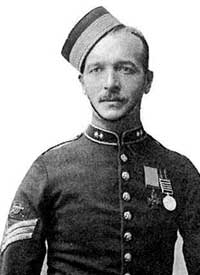 Born in Enniskillen, Co. Fermanagh on 14th April 1873 to parents from the Channel Islands. At Colenso he was a Corporal in 66th Battery, Royal Artillery. Nurse was one of those forced to abandon their guns to take cover about 500 yards from their guns. He left the cover he was in and went out under fire and assisted in the attempted rescue of Lt Freddy Roberts. Nurse served in World War 1 and was commissioned in the RA. He died in Liverpool on 25th November 1945 and is buried in Allerton Cemetery. His medals are on display in the Royal Artillery Museum, Woolwich. Hamilton Reed  Reed was born in Dublin on 23rd May 1869. He joined the Army in August 1888 as a cadet at the Military Academy at Woolwich. At Colenso he was a Captain in the 7th Battery, Royal Field Artillery. In an attempt to save the abandoned guns he led three teams of horses and men from his own battery through heavy fire to the gun positions. Reed was wounded, as were five of the thirteen men who rode with him and another was killed. Thirteen horses out of 21 were killed before they got half-way to the guns and the men withdrew. During the First World War Reed was wounded again and was mentioned in dispatches eight times. He was promoted to the rank of Major General and commanded the 15th (Scottish) Infantry Division. His uncle, Harry Lyster, had been awarded the VC during the Indian Mutiny. Hamilton Reed died in London on 7th March 1931. He is buried in East Sheen Cemetery. Frederick Roberts  Freddy Roberts was from a Waterford family. His father was Earl Roberts, who had just been appointed to take over as Commander in Chief in South Africa. Roberts was born in India like his father before him on 8th January 1872. At Colenso he was a Lieutenant in the King’s Royal Rifle Corps. Along with Cpl Nurse and two other officers, Roberts attempted the rescue of the guns of 14th and 66th Batteries. While hooking a gun to a liber he was wounded. He died of his injuries on December 17th. Roberts is buried in Chieveley Military Cemetery, Natal. His VC is on display in the National Army Museum, London. His father was also a holder of the VC, one of only three father and son pairs to earn the award. Photo Credits; Nurse and Reed www.findagrave.comRoberts; www.nam.ac.uk/
|
|
|
|
Post by groundhog on Dec 18, 2012 1:10:34 GMT
Thomas Crean
Tygerkloof, South Africa
18th December 1901  Crean was born in Dublin on 19th April 1873, the son of a barrister who worked for the Land Commission. He studied medicine at the Royal College of Surgeons in Dublin. During his school days he was an exceptional sportsman and he represented Ireland at Rugby from 1894. In 1896 he went on the Lions Tour of South Africa. When the tour ended Crean remained in South Africa working in a Johannesburg hospital. On the outbreak of the Boer War he joined the Imperial Light Horse as a trooper. He was wounded at Elandslaagethe. In 1901 he became Surgeon Captain in his unit. On 18th December 1901 he won a Victoria Cross at the Battle of Tygerkloof when he attended to the wounded under fire. He was himself wounded twice in the process and it was feared that the second wound would prove fatal but Crean pulled through. He ws presented with his medal in March 1902 by King Edward VII. After the war Crean served in the Royal Army Medical Corps from 1902 to 1906. He then went into private practice in London, rejoining the Army in August 1914. He served in France and was awarded a DSO. When peace returned he resumed his practice in London but his health deteriorated and he died of diabetes on 25th March 1923 in London. He is buried in St. Mary’s Roman Catholic Cemetery, Kensal Green. His medals are held by the Army Medical Services Museum, Aldershot. Crean is one of three Irish Rugby Internationals to have won the VC. The other two are Robert Johnston and Frederick Harvey. Photo Credit; www.findagrave.com
|
|
|
|
Post by groundhog on Dec 22, 2012 0:54:17 GMT
Patrick McHale
Lucknow, India
22nd December 1857 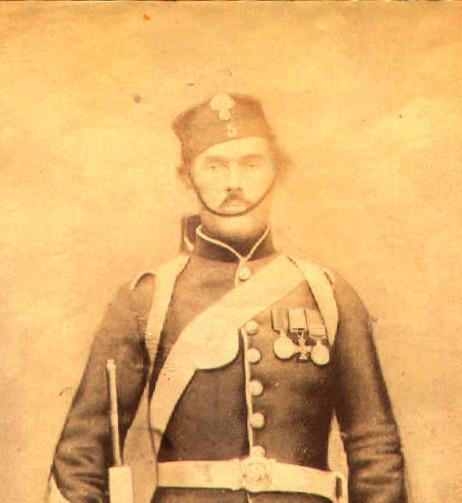 Patrick McHale was born in Killala, Co. Mayo in 1826. In 1857 he was a Private in the 5th Foot fighting in the Indian Mutiny near Lucknow. On 22nd December McHale’s company was fighting its way to some rebel gun positions sustaining casualties from grape shot as they advanced. McHale dashed forward and was first into the gun position. He had performed a similar deed in October and for these acts he was awarded a Victoria Cross. Patrick McHale served on in the army but died in Shorncliffe Camp, Kent on 26th October 1866. He is buried in Shorncliffe Military Cemetery near Folkestone. His medals areon display at the Northumberland Fusiliers Museum, Alnwick Castle, Northumberland.
|
|
|
|
Post by groundhog on Dec 27, 2012 17:58:26 GMT
James Duffy
Palestine
27th December 1917  James Duffy was born in Gweedore, Co. Donegal on 17th November 1889. In World War 1 he served as a Stretcher Bearer in Palestine with 6th Bn, Royal Inniskilling Fusiliers. On 27th December 1917 at Kereina Peak he and another Stretcher Bearer went to retrieve a wounded man. His comrade was quickly wounded so Duffy went back for help but this man was hit and killed. Duffy then went forward alone under very heavy fire, rescuing both wounded men and saving their lives. For his courage he was awarded a Victoria Cross. James Duffy died on 8th April 1969 in Letterkenny. He is buried in Conwal Cemetery and his medal is displayed in the Royal Inniskilling Fusiliers Museum, Enniskillen. A memorial stone bench was unveiled in his honour in Letterkenny Town Park in 2007.
|
|
|
|
Post by groundhog on Dec 29, 2012 11:16:15 GMT
Hans Moore
Komgha, South Africa
29th December 1877 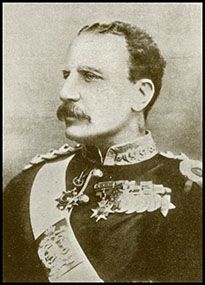 Hans Garrett Moore was born on 31st March 1834 in Carlingford, County Louth. In 1877 he was a Major in the 88th Foot (Connaught Rangers) during the Ninth Frontier War. On 29th December in action against the Gaikas, Moore went to the assistance of a private of the Frontier Mounted Police who was unable to mount his horse and was at the mercy of the attacking Gaikas. Despite his efforts the man was killed. Moore shot two Gaikas and received a spear wound in the arm. Moore rose to the rank of Colonel. Having served in the Indian Mutiny, the Ashanti War, in the Frontier War and in Egypt, he drowned in Lough Derg, Co. Tipperary on the 6th October 1889. He is buried in Mount Jerome Cemetery, Dublin and his VC, the first to be won in South Africa, is on display in the Museum Africa in Johannesburg. |
|
|
|
Post by groundhog on Jan 1, 2013 13:30:46 GMT
John Crimmin
Burma
1st January 1889  John Crimmin was born in Bruff, Co. Limerick on 19th March 1859. In 1889 he was a Surgeon in the Bombay Medical Service, during the Karen-Ni Expedition in Burma. On 1st January 1889, in an action near Lwekaw, a lieutenant and four men charged into a large body of the enemy during which two men were wounded. Crimmin attended one of them under enemy fire and he then joined the firing line helping to drive the enemy from small clumps of trees where they had taken shelter. Later while he was attending a wounded man several of the enemy rushed at him. He killed one of them and attacked a second, driving them off. For his actions he was awarded a VC. Crimmin died on 20th February 1945 in Wells, Somerset and is buried in the local cemetery. Photo; www.irishregimentsandhistory.comwww.irishregimentsandhistory.com/#/irish-vcs/4543061438
|
|
|
|
Post by groundhog on Jan 2, 2013 11:45:01 GMT
William Kenny
Kot Kai, India
2nd January 1920  William Kenny was born in Saintfield, Co. Down on 1st February 1899. His father was a Constable in the RIC. However the family soon moved to Donaghadee. Kenny joined the Indian Army in 1917 and was commissioned a 2nd Lt in the 39th Garhwal Rifles on 31st August 1918. In 1919 the army began one of its endless campaigns on the North-West Frontier of India, sending a couple of columns against the Mahsuds in Waziristan. Kenny was a company commander in the Derajat Column, a brigade-sized formation. As the column advanced the tactics employed to secure their lines of communication included the construction of defensive positions covering the tracks along which the army was supplied. While under construction the men working on these positions had to be guarded by picquets and on 2nd January 1920, Lt William Kenny was in command of one such picquet. During the day Kenny’ position was sniped continuously and attacked on three occasions by the Mahsuds. At 3.30 in the afternoon, Kenny had to extricate his company from its position and withdraw to camp for the night. The Mahsuds would inevitably rush the crest of the hill as soon as it was abandoned and subject the withdrawing troops to heavy fire as they moved downhill. The Garwhals would be slowed down by carrying their wounded. To counter this Kenny stayed behind with ten men and counter-attacked the Mahsud rush on the hill. He and all his men were killed during this action and Kenny was awarded a VC. In all Kenny’s company lost 35 men killed that day. Lt Kenny’s body was recovered and he is buried in Jandola Cemetery, Pakistan. He is also commemorated on the Delhi War Memorial and the Donaghadee War Memorial. His VC is in the National Army Museum, London.
|
|
|
|
Post by groundhog on Jan 6, 2013 20:53:16 GMT
[/img][/center] Roberts was born in Cawnpore, India on 30th September 1832, the son of General Abraham Roberts from Waterford. Like his father he was destined for the East India Company’s Army and he was commissioned into the Bengal Artillery on 12th December 1851. Roberts fought through the Indian Mutiny and won his VC at Khodagunge when he chased two Sepoys who were retreating with a colour. Roberts killed the two and captured their colours. While doing so he had a lucky escape when one of them fired a musket at him which fortunately misfired. Had the Sepoy’s musket fired it could have cut short a career which without a doubt made Lord Roberts the premier soldier of the Victorian era. He went on to command in the Second Afghan War and the Boer War. His son won the VC at Colenso in December 1899, making the Roberts one of three father and son VCs. Roberts died in France on 14th November 1914 while visiting Indian troops on the Western Front. He is buried in St. Paul’s Cathedral. His VC is in the National Army Museum, London. |
|
|
|
Post by groundhog on Jan 6, 2013 21:02:04 GMT
Bernard McCourt
Rowa, India
6th January 1858  His surname is also recorded as McQuirt. Bernard was born in Donaghcloney near Lurgan in 1829. He served in the 95th Foot in the Indian Mutiny and won a VC at Rowa on the 6th January 1858. The town was in the hands of the Mutineers who were well entrenched. During hand to hand fighting McCourt suffered no less than five sabre cuts and a musket ball wound. Bernard McCourt died on 5th October 1888 at Erney Street off Shankill Road, Belfast. His burial place was lost until in 1993 a Belfast City Council worker found his registration and unmarked burial site in a Catholic plot at Belfast City Cemetery. The Council worker’s name was Robert Burns and he contacted the the Sherwood Foresters Museum in England with a view to having a stone erected over the grave. The museum agreed but the church refused t allowthe stone on the grave which was in a pauper’s lot and held many burials. Similarly permission was refused to erect the stone on the street where he died and at the WW1 & 2 memorials in Donaghcloney. Finally Burns managed to get the memorial stone put up in the Protestant Donaghcloney Churchyard. |
|
|
|
Post by groundhog on Jan 6, 2013 21:07:56 GMT
Owen Lloyd
Burma
6th January 1893
Owen Lloyd was born in Co. Roscommon on 1st January 1854. He became a Doctor and served as Surgeon-Major in the Army Medical Services during the Kachin Hills Expedition in Burma in 1893. This expedition, and the one on which John Crimmin won his VC on New Year’s Day, were part of operations conducted at the end of the Third Burma War. Lloyd was part of the garrison of Fort Simha which was commanded by a Capt. Morton. Morton was out inspecting picquets when the Kachins attacked the fort on 6th January 1893. Morton fell wounded and Lloyd and a Subadar Matab Singh went to his asistance. Lloyd sent the Subadar back for assistance while he treated Morton’s wounds, all the while under fire from the Kachins who were about 20 yards away, On the way back to the fort, Lloyd was himself wounded. Morton unfortunately died of his wounds a short time later. Lloyd earned a VC for his courage, one of two Irish doctors to be so honoured during the Burma Campaign. He went on to earn the rank of Lieutenant-General and a Knighthood. Lloyd died in Sussex on 5th July 1941 and he is buried in Kensal Green Cemetery, London. His VC is on display in the Army Medical Services Museum, Aldershot. |
|
|
|
Post by groundhog on Jan 6, 2013 21:18:09 GMT
Ladysmith, South Africa
6th January 1900 The Boers had been besieging Ladysmith in Natal since the beginning of the war in October 1899. A 4 km long ridge near the town formed part of the perimeter defences, the hills being named after locations near Aldershot Camp in England- Caesar’s Camp,Wagon Hill and Wagon Point. Two of these hills saw Irish VC actions on 6th January 1900. James Masterson
Wagon Hill, South Africa  James Edward Ignatius Masterson was born on 20th June 1862 in Ireland. Although it is not known exactly where he was born, his family was from Co.Roscommon. He joined the Royal Irish Fusiliers and served in Egypt as an enlisted man. He was commissioned in the Devonshire Regiment in 1891 and served with them in Burma and India before going to South Africa to fight in the Boer War. The Devonshires were in action at Wagon Hill, Ladysmith on the 6th January 1900, Lt Masterson commanding one of the three companies of his regiment which charged a ridge held by the Boers and captured their position. However they then came under heavy fire from the right and left flanks. Masterson went back with a message to the Imperial Light Horse, holding a ridge 100 yards behind, to give support to the Devonshires. While crossing the open ground Masterson was badly wounded in both thighs but managed to crawl in and deliver the message before collapsing in a trench. Masterson was awarded a VC and promoted Captain. In 1911 he was promoted Major before he retired in 1912. On the outbreak of WW1 he rejoined the army as Deputy Director of Railway Transport, finally retiring in 1915. He died in Waterlooville, Hampshire on 24th December 1935, aged 73. He is buried in Hulbert Road Cemetery, Waterlooville and his VC is displayed in the Devonshire Regiment Museum, Dorchester. Robert Scott
Caesar’s Camp, South Africa 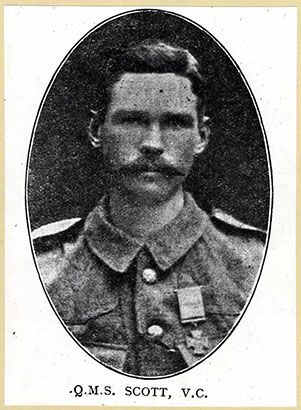 Robert Scott was born in Haslingden, Lancashire on 4th June 1874 to a family from Co. Down. He joined the Manchester Regiment in 1895 and fought at the Siege of Ladysmith. On 6th January 1900 he was part of a picquet on Caesar’s Camp which was attacked by the Boers. All the men in the picquet were killed within a short time except Scott and a Pte James Pitts. The two men held their position for 15 hours under Boer fire and were both awarded the VC. Scott served through World War 1 as a Quartermaster Sergeant in the Manchesters, retiring in 1923 and joining the RUC. When WW2 broke out he lied about his age and joined the RAF, serving until after D-Day. Robert Scott died in Downpatrick on 21st February 1961 and is buried in Christ Church Cemetery, Kilkeel. His Victoria Cross is displayed at the Museum of the Manchester Regiment, Ashton-Under-Lyne, Lancashire. |
|
|
|
Post by groundhog on Jan 8, 2013 0:21:15 GMT
John Barry
Belfast, South Africa
8th January 1901 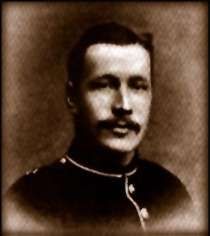 John Barry was born in Kilkenny on 1st February 1873. He served with 1st Bn, Royal Irish Regiment in India before going to South Africa for service in the Boer War. On the night of 7th/8th January 1901, he was part of a strong picquet dug in on the slopes of Monument Hill near Belfast in the Transvaal. When their positions were overrun by the Boers, Barry was a member of a Maxim Machine Gun crew. As his comrades began to retreat Barry smashed the action of the gun with a pick axe. He was shot dead while he was doing so. Gen Smith-Dorrien reported that, had Barry lived, he would have recommended him for the Victoria Cross. At that time the VC could not be awarded posthumously. However that soon changed and by Royal Warrant allowing the VC to be awarded posthumously from 9 th August 1902, 3733 Pte John Barry was awarded a Victoria Cross. It arrived at the family home in Ballyragget, Co. Kilkenny on 30th August 1902. Nowadays it resides at the Imperial War Museum in London, while the Maxim that he smashed is in the National Army Museum, having been recaptured from the Boers later in the war. John Barry is buried in South Africa, in Belfast Cemetery, Transvaal. His VC was the first to be won in the 20th Century and one of the first posthumous awards. He was the third member of the Royal Irish Regiment to receive the award and the last Irish-born member to win it.
|
|
|
|
Post by groundhog on Jan 16, 2013 0:34:23 GMT
Elandsfontein, South Africa
16th January 1881 During the First Boer War in 1881 the military in Pretoria commandeered mowing machines to cut hay. On 11th January 1881, a party of Boers captured a mowing machine, a wagon and mules. The Boers were believed to have come from Elandsfontein Farm, about 10 miles west of Pretoria and a reconnaissance in force was sent there on Sunday, 16th January with the aim of locating the Boer camp and recapturing the lost equipment. Lt-Col George Frederick Gildea led the patrol that consisted of two field guns, one mountain gun carried on a cart, 170 mounted men comprising 45 mounted infantry, 65 Pretoria Carbineers, and 60 Nourse's Horse, and 300 infantry made up of 120 Royal Scots Fusiliers, 30 from the 94th Regiment (2nd Bn, Connaught Rangers) and 150 Pretoria Rifles. The patrol located the Boer camp which was at least partly fortified and attacked it. During the attack Boer reinforcements arrived and the patrol had to withdraw. During this withdrawal two men of the oyal Scots Fusiliers were left behind and were attacked by the Boers. An attempted rescue of the two men resulted in the awards of Victoria Crosses to two Irishmen. John Danaher  Danaher (sometimes spelt Danagher) was born in Limerick on 25th June 1860. He emigrated to South Africa where, on the outbreak of the First Boer War he joined Nourse's Horse. During the action at Elandsfontein he, along with L/Cpl James Murray of the Connaught Rangers, advanced 500 yards under fire in an attempt to rescue the two wounded men. When they reached their position it was to find that one man, Pte Davis, was dead and the other, Pte Charles Byrne, was wounded. Danaher and Murray attempted to carry Byrne back to their own lines but Murray himself fell wounded. He ordered Danaher to retire which Danaher did. John Danaher subsequently joined the Connaught Rangers in South Africa and was posted with them back to Ireland. He served 27 years in the army before retiring with the rank of Sergeant. He ran a pub in Portsmouth until his death on 9th January 1919. He is buried in Milton Cemetery, Portsmouth and his VC is on display in the National Army Museum, London. James Murray  James Murray was born in Cork in February 1859. During the rescue of Charles Byrne, he was wounded and ordered John Danaher to leave them behind. The two wounded men were captured by the Boers but were handed back to the British the following day along with the body of Pte Davis. Murray survived but Byrne died five days later. Murray died in Dublin on 19th July 1942 and is buried in Glasnevin Cemetery. His VC is also in in the National Army Museum, London. Along with the two Royal Scots Fusiliers who died at Elandsfontein, Corporal James Long of Nourse's Horse was also killed in action. samilitaryhistory.org/vol052hk.html |
|